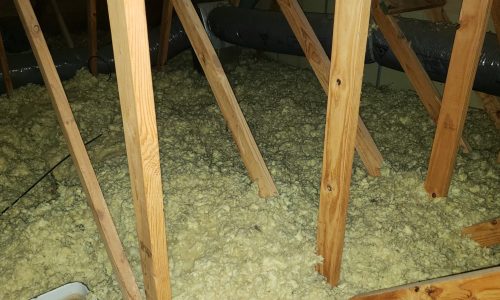We get this question quite a bit during home inspections – “There’s room in the attic to store things, right?”
Yes, but we don’t recommend it. We discourage attic storage due to the health concerns it can and does pose to you and your family. In addition, the attic is prone to temperature extremes, humidity, pests and rodents – which can contaminate, damage or even destroy your items.
What is Insulation?
Insulation is a material that is used in spaces to prevent heat flow between spaces. Generally, the exterior walls of your home and the attic will be insulated.
“Why do you not recommend attic storage?”
In addition to extreme environmental conditions, pests and rodents you need to know what insulation is made of, and what it can do. Read on!
What Insulation is Made Of
Insulation can be made of many materials. The most common types are fiberglass and cellulose. Older homes may have asbestos or vermiculite.
Fiberglass – In rolls or blown in – pink, white or sometimes yellow in color. Made of extremely fine fibers of glass that can cause skin, eye and respiratory irritation – including elevating asthma symptoms. There are some studies that show a possible link to cancer.
Cellulose – Gray, fluffy in appearance. Mostly recycled paper materials with boric acid added for pest control. Breathing this dust can result in respiratory issues, inks, dyes and fire retardants and adhesives can cause allergic and respiratory issues.
Asbestos – Banned due to health risks including cancer.
Vermiculite – Can contain asbestos.
Now That You Know
Now that you know have a general understanding of the most common types of insulation and the possible effects, is it worth the exposure and health risk?
“But I only store things in the attic that I access periodically.”
Is it worth it to expose yourself, and bring those hazardous particles into your home? Even if it’s “just a few times a year”?
Ultimately, the choice is yours, but we hope you can see why we do not recommend attic storage.


